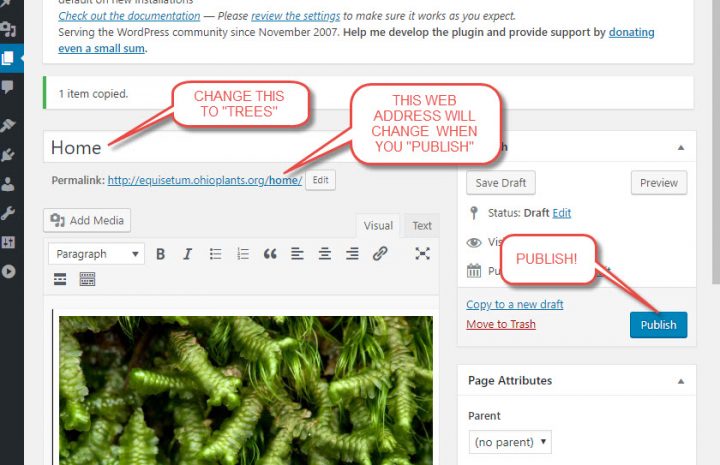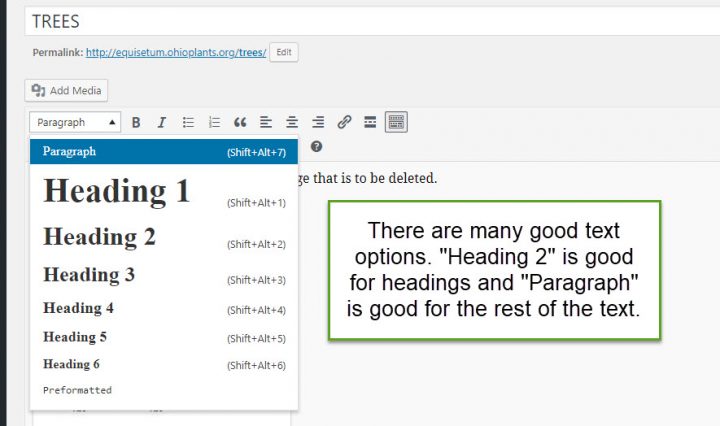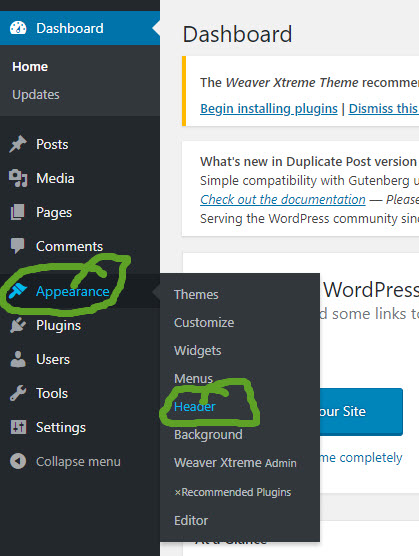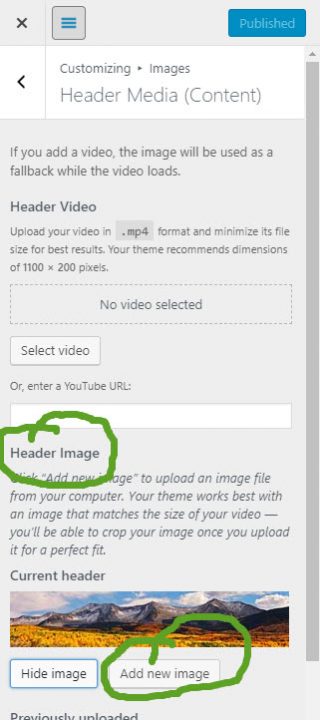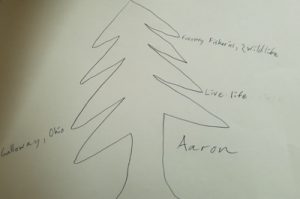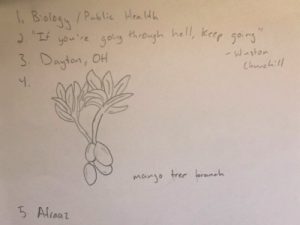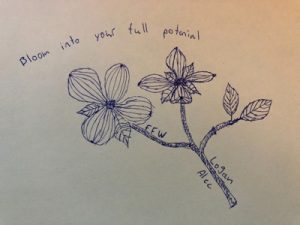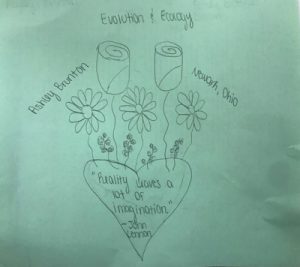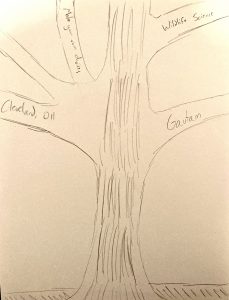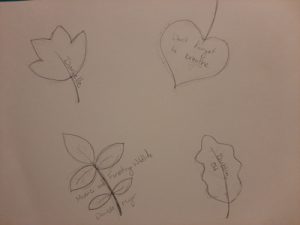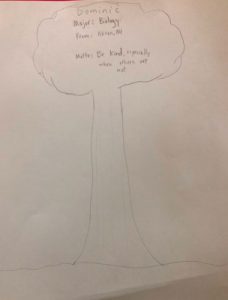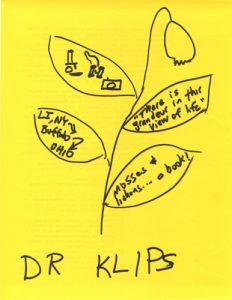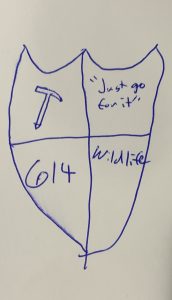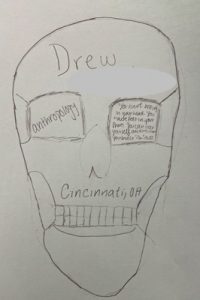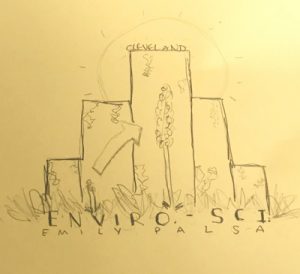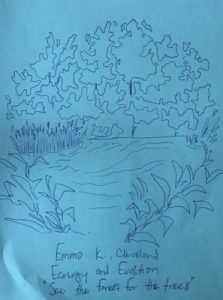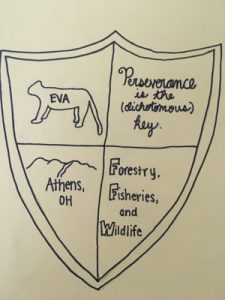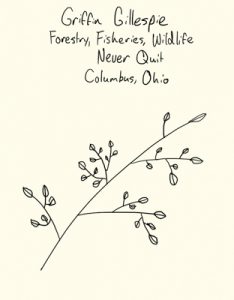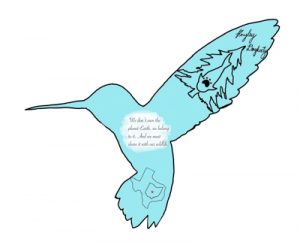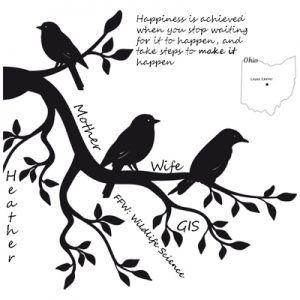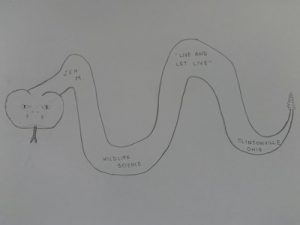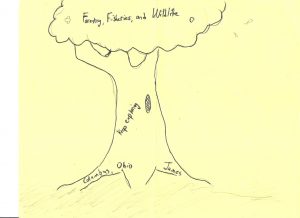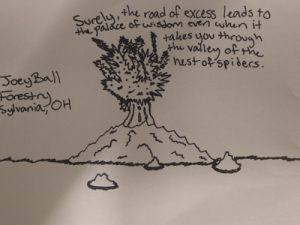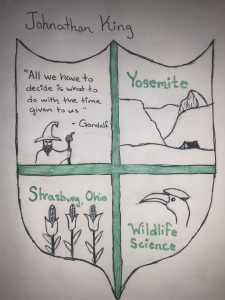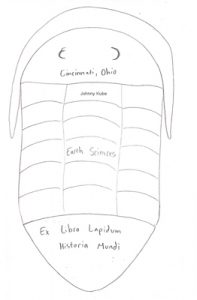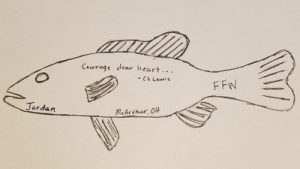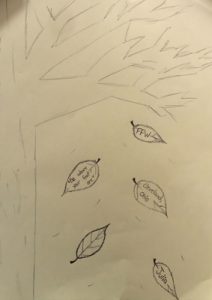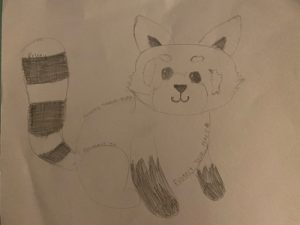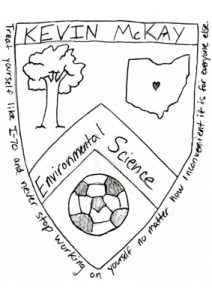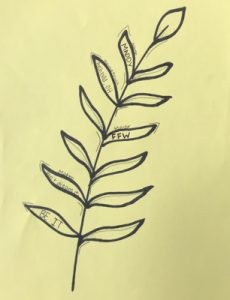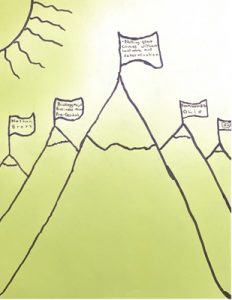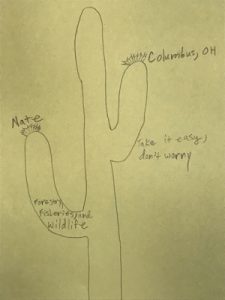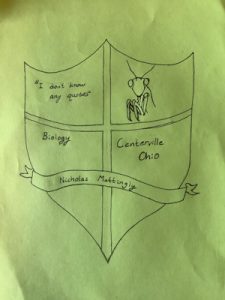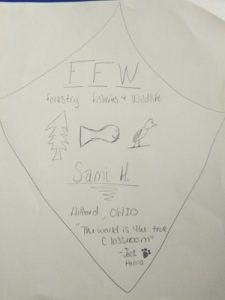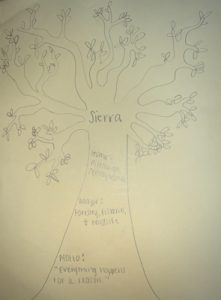END OF THE TERM BOTANICAL SURVEY UPDATES
PART ONE: FOUR HIGH CC AND FOUR LOW CC SPECIES
Now that you’ve been to your botanical survey site a few times and have a good idea what is there (and have started your written report…right??) the world is keen to hear more of what you’ve discovered! Let’s get some practice using the coefficients of conservatism (CC) assigned to each species by Andreas et al. (2002). The CC, with values ranging from 0 to 10, is an estimate of the degree to which a species is associated with high-quality natural communities similar to those which existed in pre-settlement times. Exotic (alien, introduced) species are not assigned CC values.
CC values for all of Ohio’s plants can be found in the Ohio Environmental Protection Agency’s web site. Click on the image below to navigate to the Ohio EPA reports page which includes the CC/FQAI material.
Scroll down on the EPA page to access the Floristic Quality Assessment Index (FQAI) materials. This include the following:
The original FQAI REPORT published in 2004, also available as a direct download HERE (link).
An excel SPREADSHEET published in 2004 using older species names that may in fact be consistent with our older field guides, also available HERE (link).
An html version of 2014 update of the spreadsheet available HERE (link).
Set forth on your web site a list of at least 20 species you have found so far at your site, along with the CC value for each. Also, compute the Floristic Quality Assessment Index for the site using the formula given in Andreas et al. (2004).
Using the CC data in either of these sources (either the 2004 .xls spreadsheet or the 2014 HTML version) examine the list of species you have compiled for your site. Using native plants only select FOUR OF YOUR HIGHEST CC (conservative) species and FOUR OF YOUR LOWEST CC (again, native, not alien/introduced species). Provide photographs taken by yourself, identifying features, and at least one natural history/ecology fact about each of them (cite sources).
PART TWO: FOUR INVASIVE SPECIES (boo, hiss)
Look at the material on this web site about invasive (see the “Invasives” menu item above), and also visit the Ohio Invasive Plant Council’s web site (link provided on the aforementioned “Invasives” page) and become familar with the top ecologically harmful plants in our neighborhood. Find four of them (have them be new to your web page please) at your site or elsewhere. Provide photographs taken by yourself, identifying features, and at least one natural history/ecology fact about each of them (cite sources).
PART THREE: FOUR SUBSTRATE-ASSOCIATED SPECIES
Having read Jane Forsyth’s “Geobotany” article, you are aware of plants that have a distribution either limited to or at least markedly more prevalent in the following places:
- limestone or high-lime substrates
- the high-lime , clay-rich thck till plains
- the sandstone hills of eastern Ohio
- one side or the other of the glacial boundary
Using the text and tables in Forsyth’s article as a guide to help you understand the affinities of your site’s flora, find four plants mentioned in her article. Provide photographs taken by yourself, identifying features, and set forth the substrate it is associated with, as per Forsyth. Do you concur?
WEEK 3 : FLOWERS!
Flower Analysis Worksheets (4)
and
Identifications using Newcomb’s (4)
(due Thursday September 10)
A fuller appreciation of plant life, and a more engaging experience while carrying out identifications of angiosperms, can be gotten by thoroughly examining flowers. Flowers are amazing!
As Daisy pointed out in the video, late summer is dominated by members of the sunflower family, Asteraceae, the flowers of which are generally tiny, and packed together into flower clusters that resemble individual blossoms, like so:
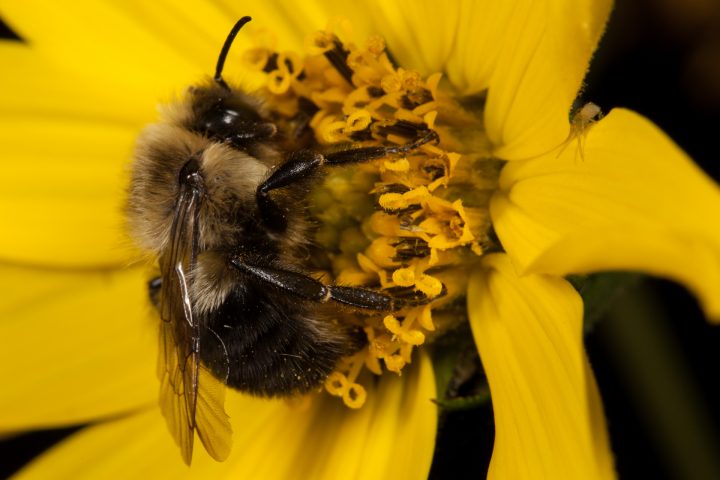
A sunflower is a member of the family Asteraceae. Note the flowers are tiny, and packed closely together.
These so-called “composites” are not suitable for the flower analysis part of this study.
These flowers are nice and all, but not suitable for this study of variation in flower structure. Ignore them for Part 1.
Again, while we are indeed studying the wild flora of Ohio, some ideal “flower parts” subjects might be garden plants because they tend to be showy-flowered, and may be even better than some wildflowers for learning flower structure.
PART 1: FLOWER ANALYSIS, 4 FLOWERS
(should not include Asteraceae, but may include garden flowers)
Find four flowers and look at them closely using your hand lens and a pair or tweezers (actually it’s better to have two –a pair of pairs of tweezers?). Just as we did last week for the TREES page, create another web page (“Pages” not “Posts“) named “FLOWERS” by cloning an existing page (your home page or the trees one), renaming it, and tapping “Publish.”
We studied flowers in the lab, and took notes on a worksheet that looked like this:
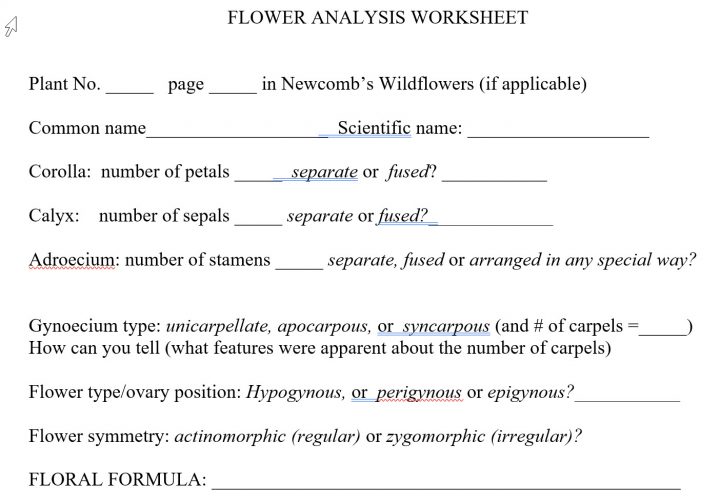
Again, ignoring the “FLORAL FORMULA” part for now (we’ll learn about that next week) please replicate this on your web page for the 4 flowers you have found. Include at least one photo –the closer the better but try to stay in focus –and include the same info as the handout. We’ve made a template for your web page that has a placeholder image and the text of the flower analysis worksheet. It looks like this (repeated 4 times):
FLOWER ANALYSIS WORKSHEET
Flower #1
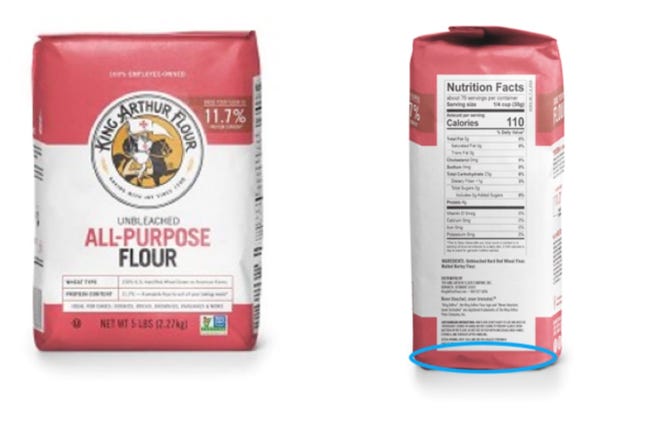
Not that kind of flower!
(Puns don’t quite work in writing, do they?)
This flower was found here (location and habitat/environment):
It is on page _____ in Newcomb’s Wildflowers
Common name_______________________________ Scientific name: ________________________________
Corolla: number of petals _____ separate or fused? ___________
Calyx: number of sepals _____ separate or fused?_____________
Adroecium: number of stamens _____ separate, fused or arranged in any special way?
Gynoecium type: unicarpellate, apocarpous, or syncarpous (and # of carpels =_____)
How can you tell? (Cite the features were apparent about the number of carpels.)
Flower type/ovary position: Hypogynous, or perigynous or epigynous?___________
Flower symmetry: actinomorphic (regular) or zygomorphic (irregular)?
Additional distinctive features: _________________________________________________
Create this form by opening and then copying the text in this little .txt file:
FLOWER ANALYSIS WORKSHEET (link)
…and, because it is html code (eek!) pasting it into your page using the “Text” editing function toggle up at the top right. Afterwards go back to “Visual” (phew!). To replace the silly flour with a serious flower, hover over it, see the pen icon that allows you to edit the photo and follow the prompts to replace it (alternatively, just delete it and add your own).
A sample set of flower analyses from May when there were oh so many flowers it was great can be seen on Dr. Klips’ web page HERE (link)
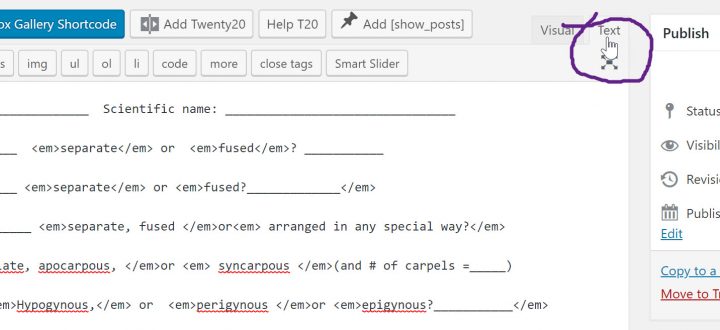
PART 2
IDENTIFY 4 WILDFLOWERS
(should not include garden flowers, but may include Asteraceae)
Find four wild plants in bloom. Identify them using your Newcomb’s Field Guide to Wildflowers. Snap a photo or two and present it/them on your web site along with the location and habitat, scientific and common names, distinctive features, and any other interesting things you’d like to share.
Have fun with this! It’s due Thursday September 10.
EEOB 2210 TERM PROJECT
BOTANICAL SURVEY
Effective stewardship of natural areas depends upon an accurate accounting of the biotic resources, particularly the vegetation, present on a site. The development of a site-specific plant species list, along with a written description of the plant communities that are there (including relevant information about the human and natural ecology of the plants) is often desired by natural resource agencies, landowners, and environmental organizations. This substantial (100 point) assignment is to perform and document a botanical survey like the ones performed by professional field botanists engaged in environmental assessment. The specifications for this project are here (link to .pdf)
BOTANICAL SURVEY INSTRUCTIONS
SAMPLE BOTANICAL SURVEY
HERE ARE RECOMMENDED SITES
(touch-screen navigate using 2 fingers)
WEEK2: DENDROLOGY (trees) WEB PAGE ASSIGNMENT
Due Tuesday Sept. 1 (credit 20 pts.)
Tree Assignment Content Guidelines: For context and inspiration, read this article in a recent New York Times (LINK). Cite and expand upon the points that Popkin makes in your tree page.
This week we will apply and extend the tree identification skills that we learned last week. Go out into the world and discover 8 wild (not cultivated) broad-leaved (not conifer) trees. Identify them to species using your Peterson’s Field Guide to Trees and Shrubs. At least half of them must belong to different genera than the 8 we learned in class. Photograph your 8 trees close enough up (close up enough?) (up close enough??) (up with enough closeness???) to see the features that allow it to be recognized for what it is. Take one or two photos of each tree –perhaps one showing the overall shape and form, and definitely one showing leaf details, and present your photos on your web site.
Provide the following information about each tree:
-
-
- common and scientific names, the latter written properly in terms of capitalization and italics.
- a written description of the pertinent identification features: leaf arrangement, complexity, and other traits that, taken together, distinguish that particular species.
- where you saw the tree, both the site locations and the habitat (the type of environment, i.e., swamp forest).
- for each tree, provide at least one interesting statement about the tree’s human or natural ecology that you hadn’t known before. Mention the source of your information and, in the case of internet sources, provide a hyperlink to that source.
- have fun with this; be creative, and be sure to compare your experiences with the ones recounted by Gabriel Popkin in the “Tree Blindness” article you read.
-
Tree Assignment WordPress Guidelines: We want pages (not posts) and we want those pages to be formatted neat and simple just like our HOME page (single column with no sidebars; info bar hidden; page title hidden; comments and trackbacks not allowed). Therefore please do NOT create a fresh new page for each new topic. Instead, “clone” your HOME page, and rename it, as follows.
Clone your home page by using the “Copy to a new draft option at the top of the page while you are in “edit” mode. (Note: this can also be done in the “Pages” section of the Dashboard, but this way is a bit simpler.)
Change the name of the page and it will automatically change the URL (“permalink”) to whatever you named it, in this case, “TREES.” Don’t forget to “Publish.”
Delete what’s there and add new stuff being sure to use the text selection options (Header 2 for headers and Paragraph for everything else works well.) Note the options for boldface, italics, and the ability to add links.
Adding media (photos) is pretty easy; just click the “Add Media” button and find the photo you want to add.

Add Media.
You can upload photos of any size (pixel dimensions) and WordPress automatically creates a set of lower-resolution versions. Note the options displayed on the right-hand side of the media page. In most instances, you will want to use “Large” size (720 px wide), centered. You can add a caption when you upload, or afterward while you are editing your page.
WEEK 1…LAUNCH WEB SITES
Due Sunday (midnight) August 30 (credit: 10 pts.)
Let’s begin this adventure by launching our web sites. Your web site is a subdomain of this very web site (www.ohioplants.org). The Universal; Resource Locator (URL) for your site is the genus of one of our favorite plants (dot) ohioplants.org. For convenience, see below, there are links to your sites. To EDIT your site, simply enter into the browser bar your site name with “/wp-admin” added to it. To log in, enter the username and password you were sent in a recent email. Welcome!
Personalize your HOME page:
Add a header image and introduce yourself!
Header image. Navigate Dashboard -> Appearance -> Header. Take or obtain a photo you like, crop/resize it to the recommended pixel dimensions, and put it in place of the beautiful mountain scenery that sadly doesn’t look anything like Ohio. (Details below.)
Add a new image, following the prompts. The image adding procedure allows cropping, so the header picture doesn’t have to already be 1100 x 200 pixels, but you might want to start with an image with those dimensions.
Introduce yourself (first name only) on your homepage. Here’s a chance to let your classmates and instructors learn about your botanical interests. Because these web sites enable you to do writing for the real world, to foster comfort and privacy we are encouraging you to use your only first name (or an alias?…Hi, I’m Trematodon!”).
The editor has two options –“visual” and “text.” “Visual” is quite WYSIWYG and works like a word processor, and is the mode you’ll probably always use unless you really like hypertext markup language. Delete or add to the text that says “Hi! I am …” that is currently on your home page. Please do not delete this page and make a new one, but rather edit (i.e., add content to) this page.
Interpret/explain your “coat of arms.” Coats of Arms: As part of your introduction to us and your colleagues, you hsve already created a create a “coat of arms” that is representative of your background and interests. Here’s the template for that that we followed.
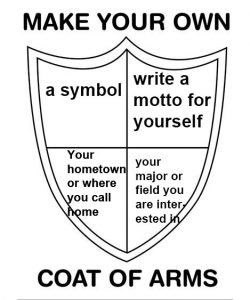
Add a few fun biographical tidbits (or many, if you are so inclined) to this page. Suggestions: your academic and personal interests and career goals, your favorite plant, aspects of the natural world that most interest you, a definition of “Botany,” what you hope to learn from this class, etc. Have fun with this!
Clone your HOME page when you make new pages.
Note: For all the succeeding web assignments, you will make separate pages (PAGES, not POSTS!) by going to “all pages” on the dashboard (two little pages icon) and creating a “clone” of your home page. Because the home page is formatted in the preferred manner (one column, no sidebars, no comments), please do not create new pages from scratch. Instead, clone your homepage, rename it, and replace what’s there with your new content.
Again, for all the succeeding web assignments, make separate pages (PAGES, not POSTS!) by going to “all pages” on the dashboard (two little pages icon) or, alternatively, selecting “Copy to a new draft” on the menu bar at the top.
LINKS TO WEB SITES



